Bedding plants are either annuals or biennials and are grown for the continuous color they provide over many months. The plants are normally short-lived, but because of the huge range available, you can have color in the garden almost all year by using bedding plants.
Summer bedding plants are a fantastic choice for a new gardener or for someone with a new garden. You can be creative, and can have instant color that lasts throughout the summer. You have a choice of planting in flower beds, or in containers.
Most common are the summer bedding plants such as petunias and begonias. But there are so many species to choose from, you can take your pick.
You can find bedding plants which are climbers, bedding plants which are grown for their foliage and bedding plants which will thrive in shade. You can find tall bedding plants and ones which are short and make ideal edging plants.
However choosing the best summer bedding plants is not without its challenge; the best summer bedding plants need to be tolerant of heat and drought conditions.
Summers are getting hotter, and periods of drought are common. You need to select durable plants which will continue to perform despite difficult conditions.
Because many bedding plants are sterile, they will not set seed, and this is why they will often continue to flower until late in the year.
If you plant your bedding plants in containers, by mid-summer their leaves will have covered the compost. This makes it hard for rain to penetrate into the container, leaving the roots devoid of humidity.
In addition, plastic containers will heat up and suck out any moisture, leaving the inside of the container dry. So regular watering is essential if you are to obtain good results.
If possible, use a moisture-retentive compost which will be particularly helpful during the hot, dry days of summer.
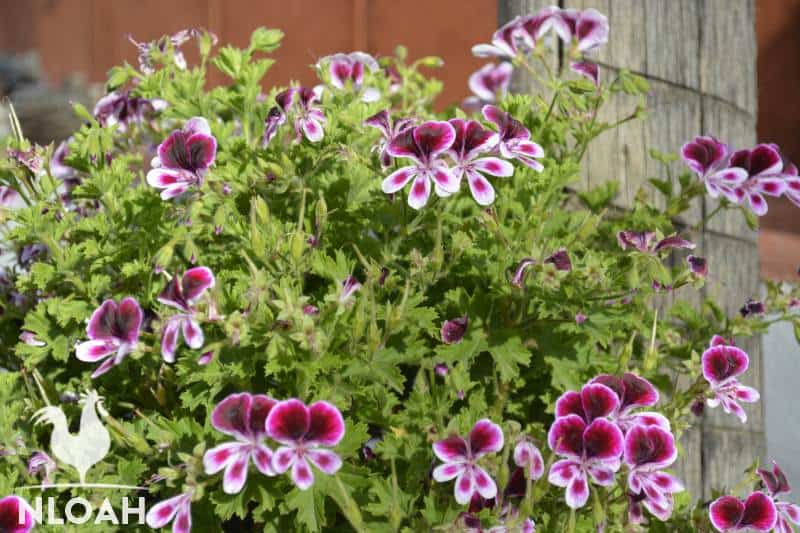
Geranium
The ever popular, most popular summer bedding plant is the geranium. Also known as a pelargonium, it will give you flowers from late spring to the first frosts. And what a display it will provide!
The plants are robust, and while not drought tolerant, they don’t need vast quantities of water to thrive. Too much water will promote foliage to the detriment of blooms.
Modern hybrids love sunshine! They love heat! The color range is huge but primarily geraniums are available in shades of pink, violet, white, red, and orange. You can obtain varieties which are scented, trailing, climbing or upright.
Geraniums are your number one bedding plant if you are looking for a plant which is sufficiently versatile to plant in a flower bed, border, patio container, trough, hanging basket or a feature obelisk. Zonal geraniums seem to be able to withstand even more sun, whilst ivy geraniums, (the trailing kind) appreciate a bit of shading from excessive afternoon heat.
Geraniums are perennials, but are usually grown as annuals outdoors, because they are not tolerant of frost. To ensure the continued abundance of flowers, you need to feed them regularly.
Begonia
The summer bedding tuberous begonia has large, blousy blooms in vibrant colors. It does well in both shade and sunny positions. The biggest advantage of the begonia is its long flowering season, continuously throughout the summer and until the first frosts.
Some varieties have dark or mottled leaves to give additional foliage interest. You can get trailing and upright varieties and can find suitable plants for flower beds, hanging baskets or window boxes.
These plants can be lifted and stored over the winter. Each year, they will get bigger and better and provide larger and more vigorous blooms.
Begonia semperflorens is a cultivar which is treated as an annual bedding plant. It is a short plant and produces an abundance of smaller flowers over a long period during the summer.
This is the best choice of begonia if you are looking for a begonia with heat, sun and drought resistance. Even the cultivars will do well in sun providing a little shade is provided on hot afternoons.
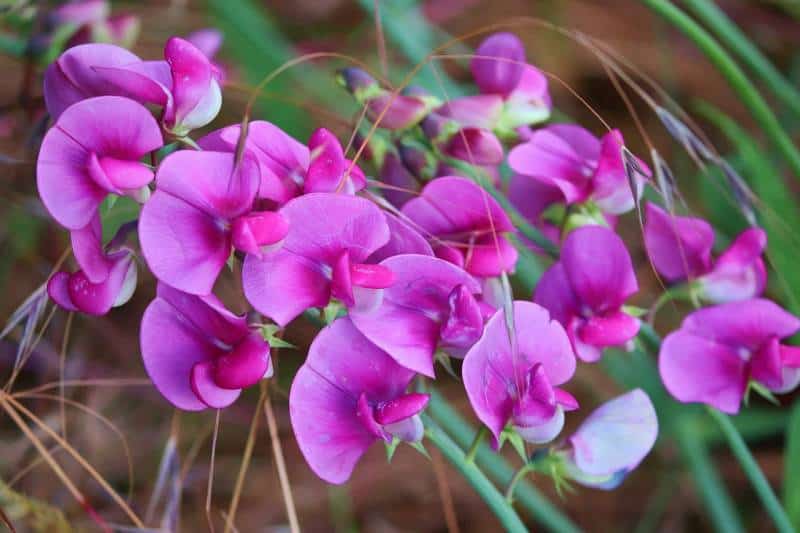
Sweet Pea
The delicate, sweet fragrance of the sweet pea is unmistakable. It is a cottage garden staple. Grow it up a wigwam or netting, and let it reach 6.5 feet / 2 meters in height. Alternatively, grow a dwarf variety which will not require staking or a support.
You can grow the dwarf variety as an edging plant for ground cover or at the front of your borders. Whichever you choose, the sweet pea will provide you with beautiful scented flowers during the summer in a wide range of colors. Perfect as a cut flower, it is an excellent summer bedding plant.
There is a variety of sweet pea Lathyrus odoratus Zinfandel, which has terrific heat resistance. It is a beautiful purple color and produces large blooms over a long season even in the strong summer heat.
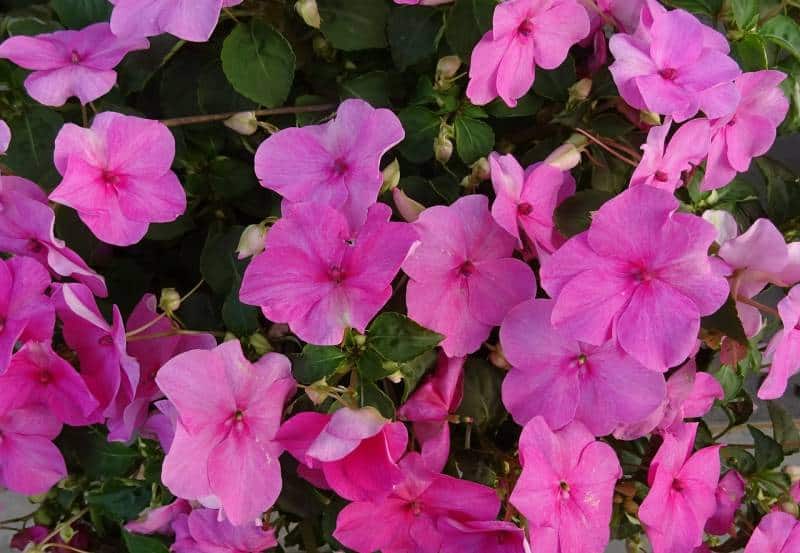
Busy Lizzie
In recent years, the previously popular busy lizzie suffered from downy mildew and has now largely been replaced by impatiens New Guinea. This is a great choice of plant for beds which are in shadier locations. The flowers are large and come in a wide range of colors.
The flowering period is long. They won’t stop flowering until the first frosts and the plants themselves are an attractive shape, forming a bushy habit. Whilst the plants will quickly fill a container, they are also an excellent choice for ground cover.
However, a word of caution. Plants will often stop flowering if the temperature rises above the mid-80s. They perform best in partial shade. Whilst they will thrive in sites that receive up to 4 hours of dappled sunshine, they will not do as well in full sun.
If you do plan to plant them in a full sun location, you need to acclimatize them to the increased light levels gradually before planting them out. In addition, if they are planted in full sun, they will require frequent watering during hot dry conditions.
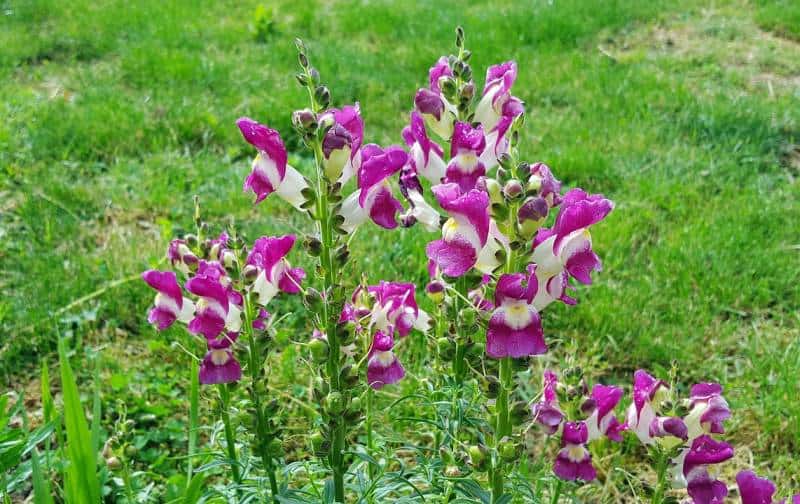
Antirrhinum (Snapdragon)
The Antirrhinum will flower for an incredibly long time. Its flowers are large, of interesting shape and in a variety of bright and varied colors.
In addition to the beautiful floral display, the antirrinhum will also provide a plant of architectural interest due to its long flower spikes and mouth like flowers. You can get the plant as a dwarf variety, or as a large plant which can grow to almost a meter in height.
The taller plants will give you a superb cut flower, and a good source of nectar, popular with bees. It smells sweet and is available in a wide range of colors.
There are over 40 varieities of Antirrinhum, also known as snapdragons due to the shape of the flowers.
Because they are Mediterranean natives, they flourish in full sun. Very easy to care for, they are the perfect choice for a summer garden as they will flower for the whole summer. They bloom far better given a sunny location.
Lobelia
Available in shades of cool blue, violet and white, the trailing variety is a dainty and epheral flower which will give you dense swathes of color for your hanging baskets, or patio containers.
If you want an edging plant for your borders, then choose the upright variety which will give you a vibrant long flowering border plant which will complement any summer bedding scheme.
Lobelia is a pretty choice, and easy to grow and a great choice if you are searching for a plant to blend in with other bedding plants.
It is a good choice of plant for a sunny location, and there are hybrids available which have strong resistance to heat. Lucia and Laguna cultivars as well as Magadi, are examples of hybrids which are considered heat proof. They will continue to flower from late spring right up to the first frosts.
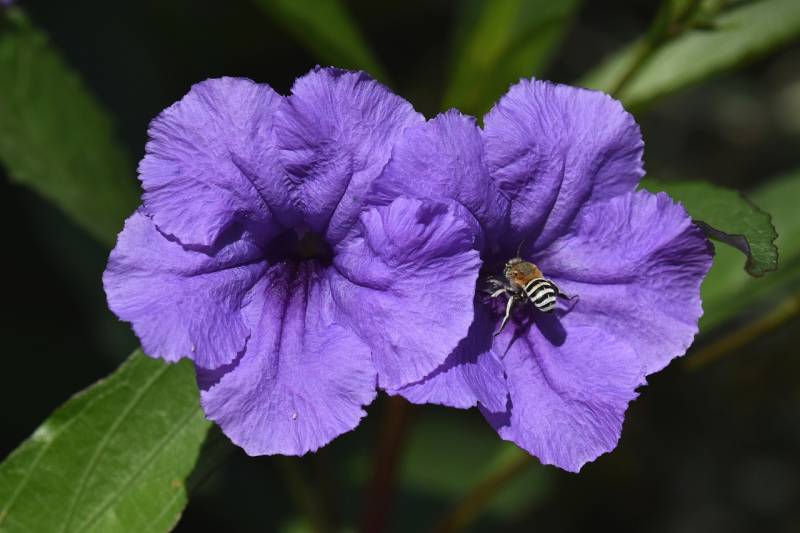
Petunia
Surely the petunia is one of the most popular summer bedding plants (and deservedly so). The petunia epitomizes summer, it is the plant of choice if you have hot, dry summers.
The flowers are glorious, they are abundant and large in size. You can get bright colors, stripes and patterns.
The most vigorous are the purple varieties, which you can even train to climb a tower. But you can get petunias which are upright, or those which climb or which trail. Wherever you choose to plant petunias you can be assured of a spectacular display.
Whether you have them spilling from hanging baskets, window boxes or choose to grow upright varieties in your flower borders, the effect will be eye catching.
Petunias are considered heat tolerant, and dry hardy. This is a great advantage if your petunias are planted in containers because the compost will dry out far faster than garden soil. Allow the soil to dry out completely between watering, and then allow them plenty of water.
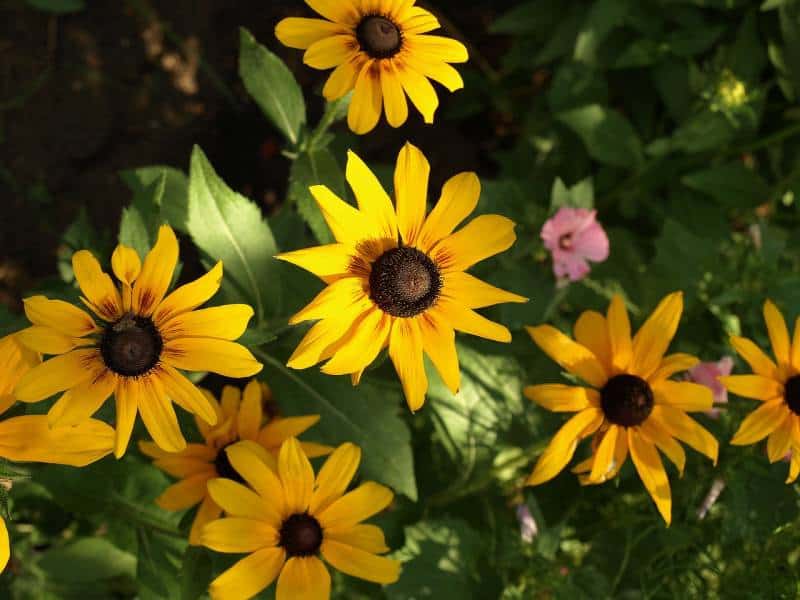
Rudbeckia
The rudbeckia grown as an annual is a great choice of flower if you are looking for a bright and colourful display for the late summer period.
This plant is bright and vibrant and will provide you with a cheery and fiery show of red and orange blooms from July to October.
Once again, you can obtain dwarf and taller varieties, with the taller ones also providing you with an excellent cut flower.
Shorter varieties such as Rudbeckia Goldstrum are guaranteed to bring success to your summer flower beds. This variety has compact, yellow daisy like flowers which clump together to form a dense and vibrant ground cover.
The Rudbeckia is a fantastic pollinator friendly plant and a great addition to include with your summer flowers.
It is a great choice of summer flower if you are looking for a plant which is heat and drought tolerant. However, it will require a weekly watering if you want it to continue to flower throughout the summer.
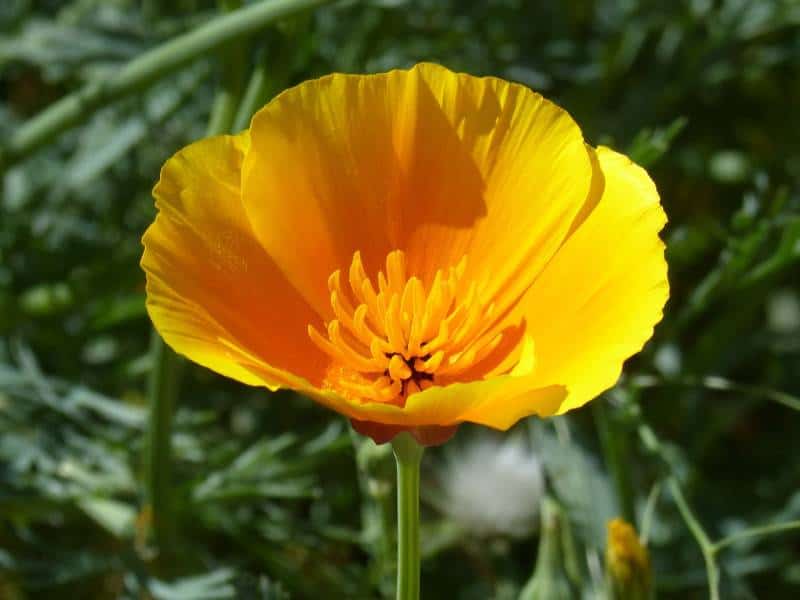
Californian Poppy
Sown as an annual, this seed will provide you with a colorful plant year after year, due to its ability to self-seed.
Originally only available in orange, recent breeding schemes have widened its color availability to include shades of red, yellow, pink and apricot.
This is a plant which is greatly attractive to bees and insects and will thrive in poor dry soil. You can hardly find an easier plant to grow – simply scatter the seeds where you want them to flower and they will provide you with expansive drifts of color and they will self seed year after year to increase the show.
In hot summer areas, the plant may die back if there is a prolonged period where temperatures go above 90 degrees F / 32 F. The plant may go into a state of dormancy in response to a period of intense heat.
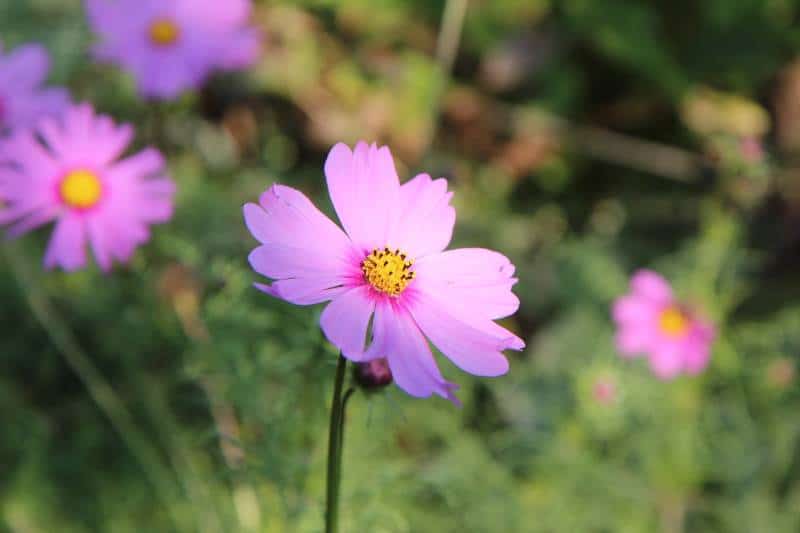
Cosmos
Yet another bedding plant which will attract bees and insects to your garden. Cosmos flowers are large and pretty. They are held high on slender stems and as an added bonus, the foliage is fern like and a very attractive addition.
A great cut flower, the blooms will continue non-stop throughout the summer and until the middle of the autumn.
Cosmos flowers look great when intermingled in an informal, cottage style of garden. Cosmos is a heat loving plant and does best when the temperatures are above 60 degrees F / 15 C.
They love a position in full sun and will bloom throughout the summer. They thrive in the heat, and are also drought tolerant which makes them an excellent choice of summer bedding.
One of the easiest flowers to grow, it is generally pest and trouble free. Give it a hot, dry location, poor soil and little – if any – fertilizer and you will get an abundance of blooms all summer long!
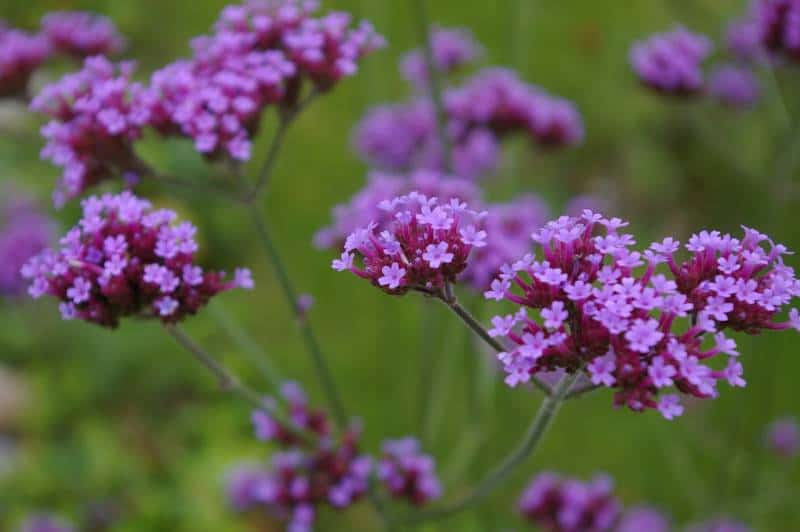
Verbena
What more could you want? Verbena will give you long lasting blooms, and is a plant that will thrive even during the hottest days of the summer.
It will attract bees and butterflies to your garden, and the exquisite range of colors and patterns available will provide you with a true spectacle of summer beauty.
Some varieties such as Verbena Endurascape Purple are resistant to mildew, and are tolerant of adverse weather conditions. The deep purple blooms are beautiful, and make a real statement whether planted in a container or as part of a summer bedding planting.
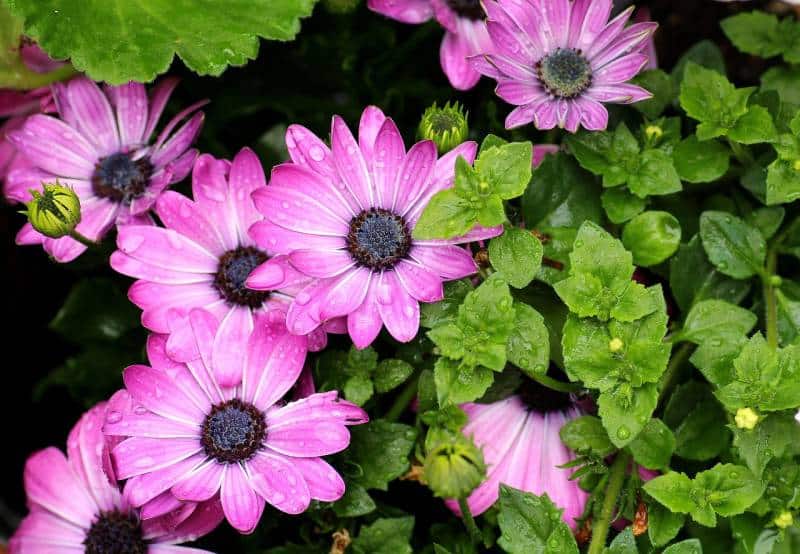
Osteospermum
A cheerful addition to a summer planting scheme, the osteospermum is also known as an African Daisy. Some of the varieties produce double bloom flowers. They are available in a variety of pink, lemon, white, and purple colors.
Most varieties only open during periods of sunshine, but you can get a variety called Lemon Ice, which opens all day and produces white and yellow blooms which last for a full 24 hours.
Osteospermum is a plant that likes full sun. If you plant a small variety in a container, make sure it is placed in full sunshine, on a sunny patio or windowsill.
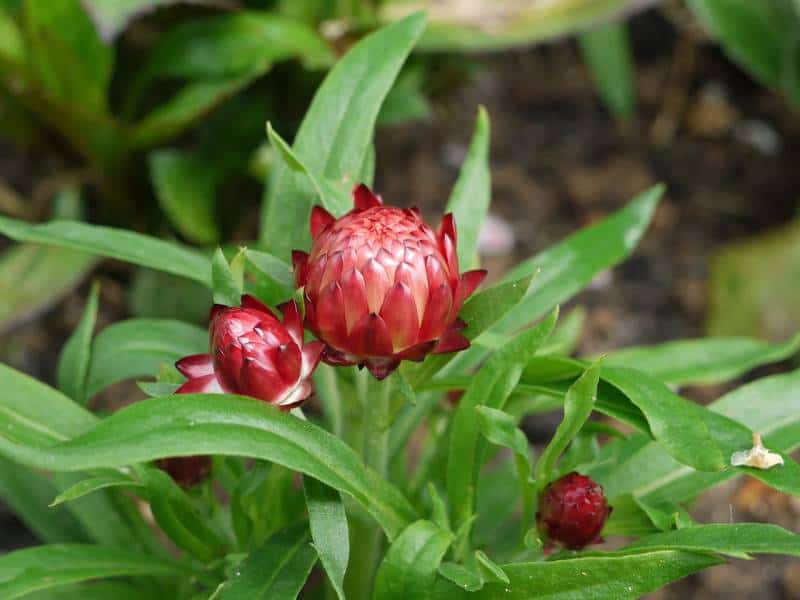
Helichrysum
Helichrysum are most usually grown for their flowers’ ability to be dried and preserved. This is why they are also known as everlasting flowers. When they bloom, they continue to flower for a long period from late spring to the first frosts. The flowers come in a range of bright and vibrant colors.
The compact varieties make a great addition to a summer border. The prolific nature of their blooms, held on short stems close to the ground, provide a golden carpet throughout the summer months.
Helichrysum is a Mediterranean coastal plant where it symbolizes the region with its abundance of tiny golden florets and silvery gray leaves. It seeks sunshine, and hot arid soil. It has a distinctively curry type of scent and in Provence is known as the curry plant for that reason.
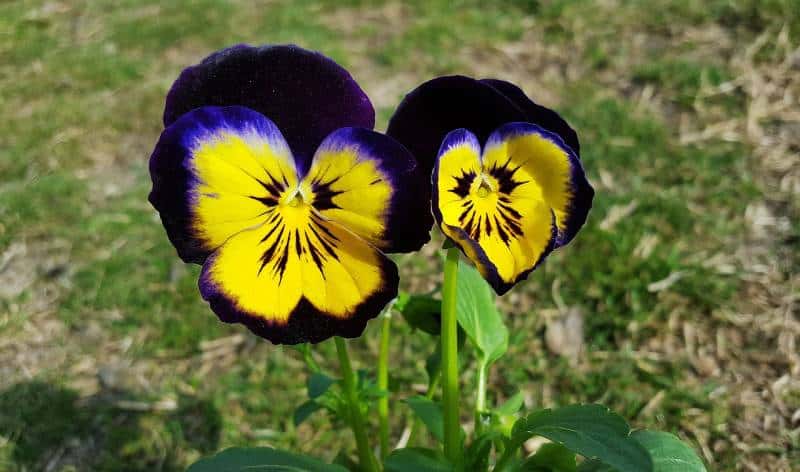
Pansy
One of the easiest plants to grow, this is a gardener’s favorite. Colorful and long-lasting, this can provide you with color from May until the frosts. However, although the plant is tolerant to sun, it will stop flowering once the heat of summer arrives.
This is why most people grow pansies as an annual for the cooler seasons. The plants tend to go leggy and untidy once the temperatures rises.
As soon as the temperatures start to cool again, flowering will recommence. If you opt to plant in partial shade, providing the pansies are dead headed, they will offer continuing blooms. You can plant pansies in troughs, borders or hanging baskets.
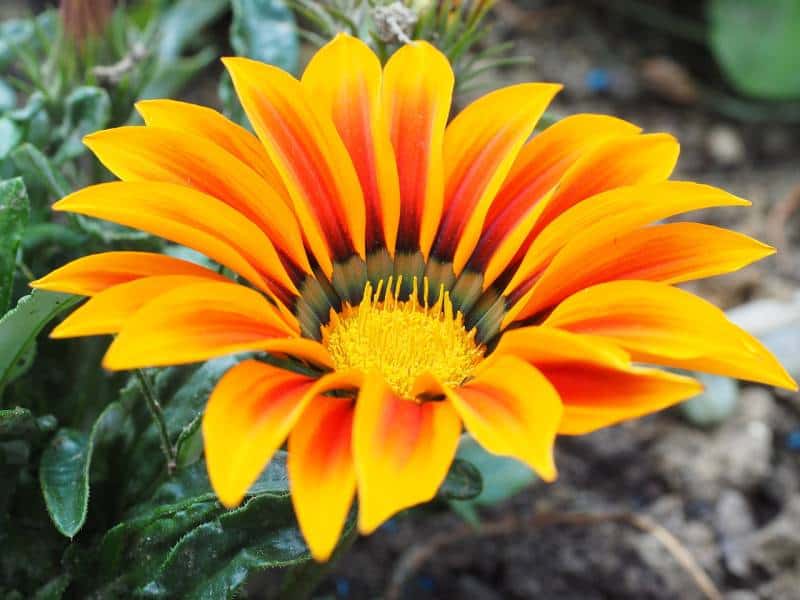
Gazania
One of the most colorful choices available, this is a popular plant with gardeners. It will bloom throughout the summer until the frosts and you can opt for bright reds, oranges or yellows as we well as pink or cream.
You can plant gazanias in a border, or in a container. They love hot sunny spots and are well suited to dry areas too. Some varieties will only open when it is sunny, so if you have a poor summer, gazanias may be a disappointment.
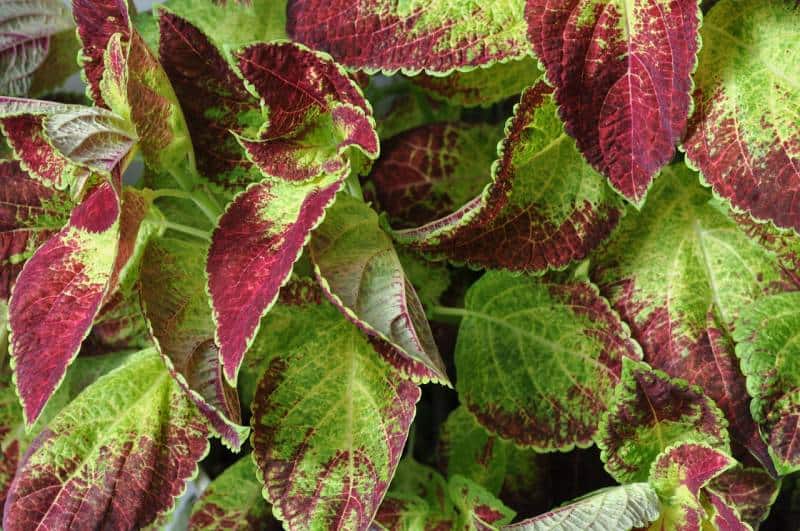
Coleus
Coleus are not grown for their flowers, but for their interesting foliage. Their leaves can be fragrant, sometimes exuding a spicy scent.
Often the leaves are patterned. Sometimes striped, Coleus come in a range of red, green, white and yellow colors.
Coleus thrive in hot, sunny locations. They are also tolerant of dry conditions and don’t like to be over watered. The plants can be bushy and low growing. They provide beautiful ground cover addition to a summer border display.
These plants can take brutal heat, and some newer varieties are taller, growing up to 1 meter in height.
If you don’t want the flowers, which are rather insignificant, you can simply pinch them off at any time, without causing any harm to the plant itself.
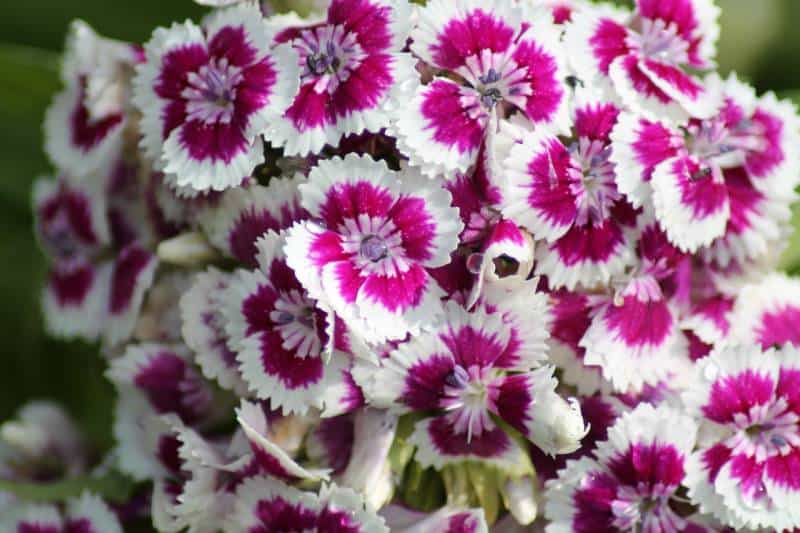
Dianthus (pinks)
A gardener’s favourite of old, dianthus are a member of the carnation family. They are prized for the mass of blooms produced during the summer.
They will provide a beautiful scent and the prolific display of flowers will make a stunning addition to the summer flower bed.
The miniature, dwarf variety is called Dianthus Deltoides. It produces a stunning carpet of lilac pink flowers perfect for providing summer color.
A great choice for a summer bedding plant because of its tolerance to heat and drought. It will require light watering particularly in the height of summer but remains one of the best investments for a sunny site.
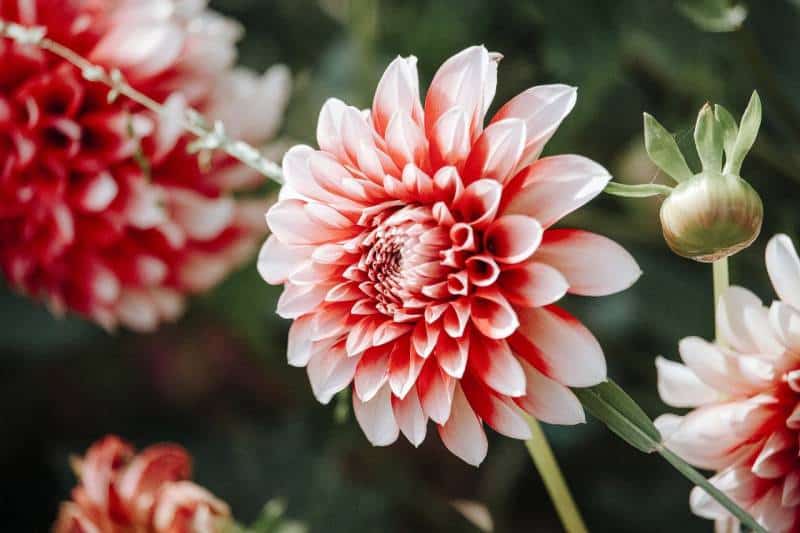
Dahlia
Dahlias perform well in sunny and warm positions and there are many compact varieties available which are suited to container growing or for growing as edging plants in the front of borders.
However, although they are sun loving plants, if the temperatures get too high, the plants may stop flowering. Usually however, more sun means more flowers. If you can choose a site where half the day is in sun and half the day in partial shade, then that would be ideal.
Unfortunately, slugs like the new foliage and shoots produced by dahlias so check your plants regularly at dusk.
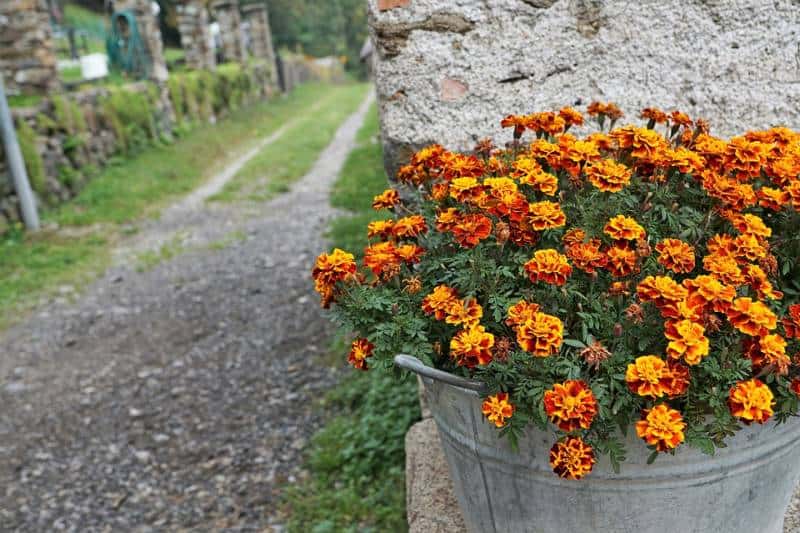
Marigold
Whilst they are commonly known as bright yellow or orange brash flowers, they are also available with cream or maroon flowers.
Marigolds are ideal choices for hot summers, they tolerate heat well. Marigolds have been used as companion plants for decades. They are an easy plant to grow with lots of beautiful flowers requiring little care.
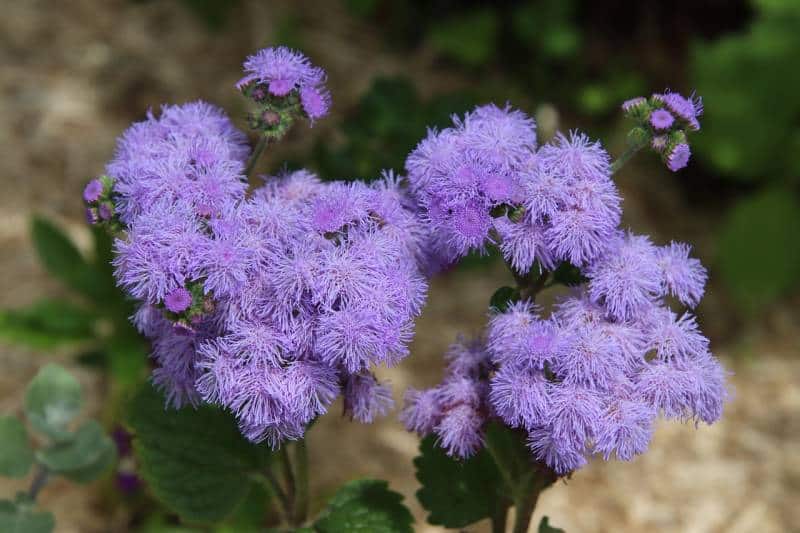
Ageratum
Powder puff like, dense clusters of blue flowers are produced in clumps which are popular with bees and butterflies. Ageratum are great to include in containers, and perform equally well as edging plants in summer bedding displays.
Ageratum love the sun, and are perfect in hanging baskets. Most are disease resistant. They are one of the most heat resistant annuals that thrives in direct sunshine and in heat.
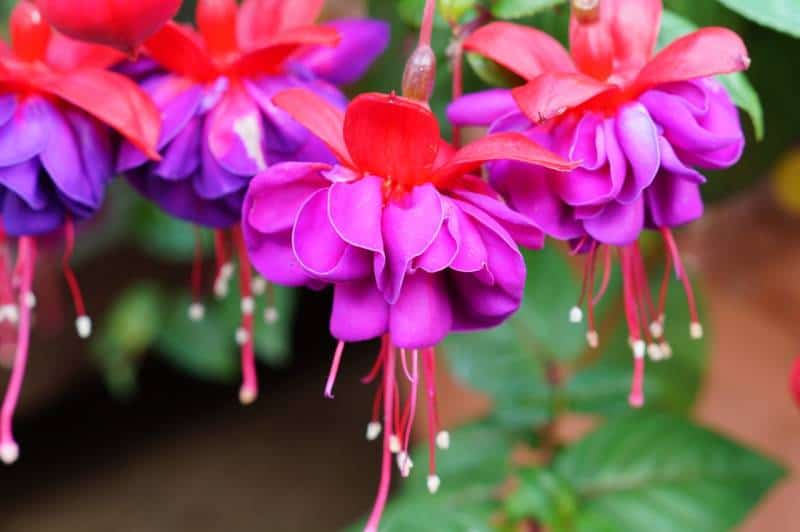
Fuchsia
One of the most popular bedding plant choices for both amateur gardeners and professionals alike. The flowers are produced in a range of bright and showy colorways during the summer months. There is a wide choice of shape and size available too.
Fuchsias are available in upright or cascading varieties. Often the pendant flowers produce a waterfall of color. The flowers can be single, semi-double or double.
They are ideal to plant in borders, pots or other containers. However if you grow fuchsias in plastic pots, they should never be placed in direct sun or left outside if the temperatures are very hot. If the soil around their roots gets too hot, they will almost certainly die.
Most fuchsias prefer cooler temperatures but there are fuchsias which are more tolerant of heat. Those with long tubes and short petals tend to originate from warmer areas and smaller flowering fuchsias should survive though may stop flowering in very high temperatures.
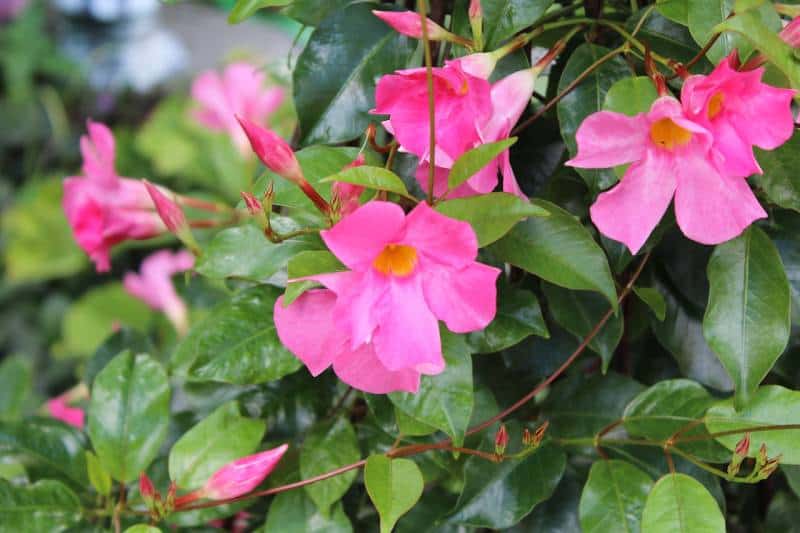
Dipladenia
Although this is a tender perennial plant native to Brazil, it is an easy to grow plant when cultivated as an annual outside its area of origin.
When exposed to full sun, dipladenia is a superb summer plant. It is drought resistant and climbs well. Beautiful displays of pretty red or pink flowers are produced from spring to the end of summer. It will die once temperatures fall to less than 10 degrees Centigrade / 50 F. It is very easy to grow, requiring almost no attention.
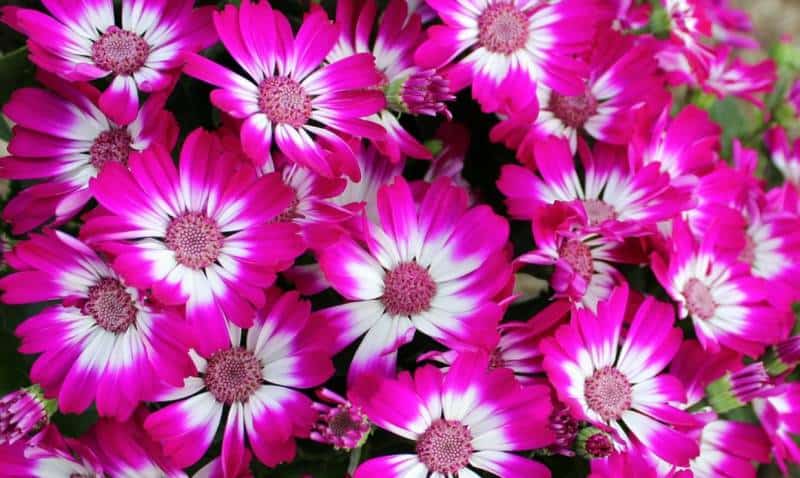
Cineraria
Cineraria dislikes being in waterlogged soil. It is a tender perennial, usually grown as a short lived houseplant. You can grow them outside in the garden during the summer.
But because it prefers partial shade, it will not do well in a hot, sunny position. So if you are growing in a hot, dry climate Cineraria is not the best choice of plant for you.
The plants are compact so are ideal to use as edging in borders or to plant in containers. The foliage creates a great effect when planted alongside bright flowering summer bedding plants such as salvias.
Cineraria are useful additions and can be overwintered for they will tolerate mild winters. They make an attractive companion plant to use with flowering winter pansies.
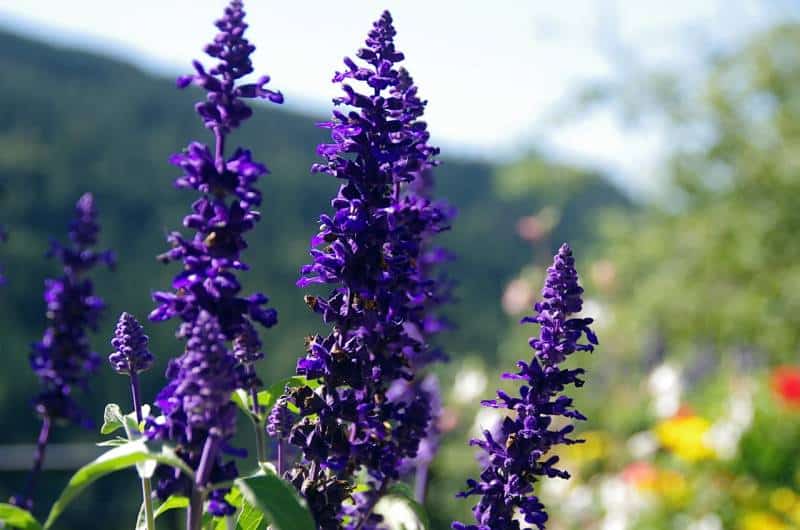
Salvia
Salvias love heat, and can tolerate some drought conditions. They are ideal heat tolerant summer plants. Like many of the plants listed, they are great pollinators and will attract bees and butterflies to your garden.
Salvias come in many different forms, heights and colors. Some flower during summer and some wait until fall to bloom. They produce prolific flowers without the need for deadheading.
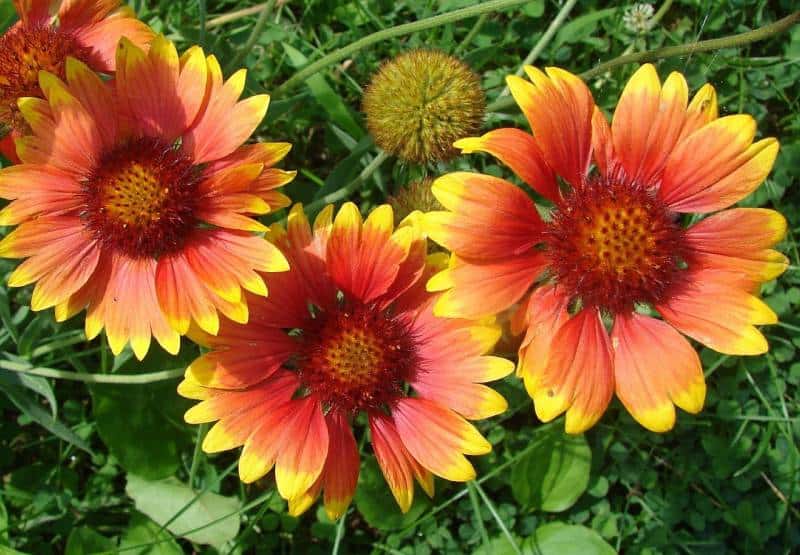
Gaillardia
These are great additions to any bedding display. The plants flower for extended periods and will continue to flower well in to the Fall. They are consistent and uniform, vigorous and start to flower early.
Another great advantage – they will save you lots of time, because they don’t need to be deadheaded. You can use them planted in borders direct in the ground or in containers. They attract bees and butterflies and come in a lovely selection of yellow, orange and red.
Although they will perform best in moist, free draining soil, they will tolerate dry conditions. Once established they are even considered drought tolerant. Because they also tolerate heat without adverse effects, they are a good choice of summer plant.
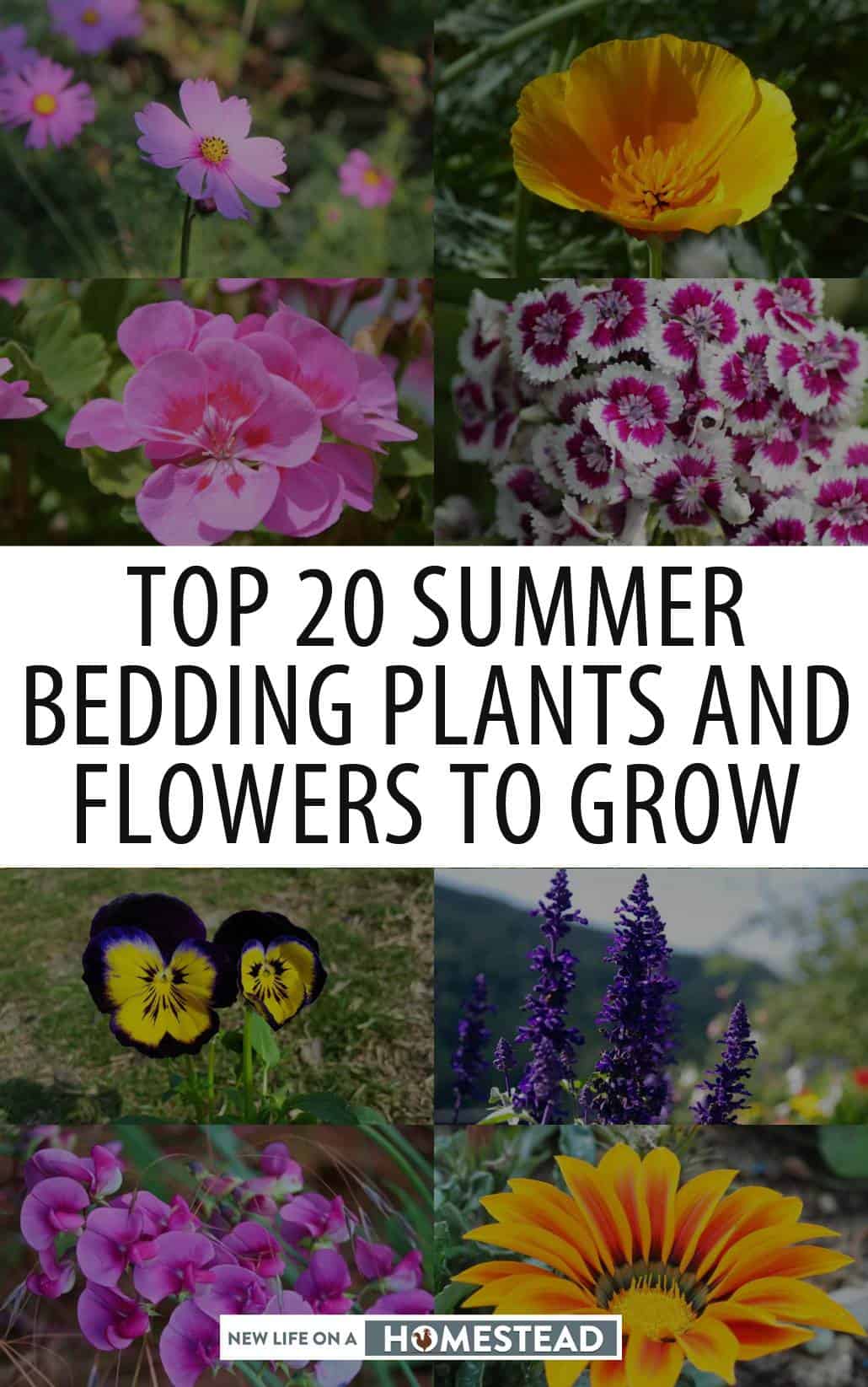

Sally is a retired English lawyer who spent 20 years homesteading on the Welsh hillsides in the U.K.
Semi-retired, she moved to France 15 years ago, where she and her husband set about restoring a 14th century watermill which came with 5 hectares of woodland, riverbank, and pastureland.
Using the skills and experience gained in the U.K, they continue to enjoy working on their land, woods and water.
